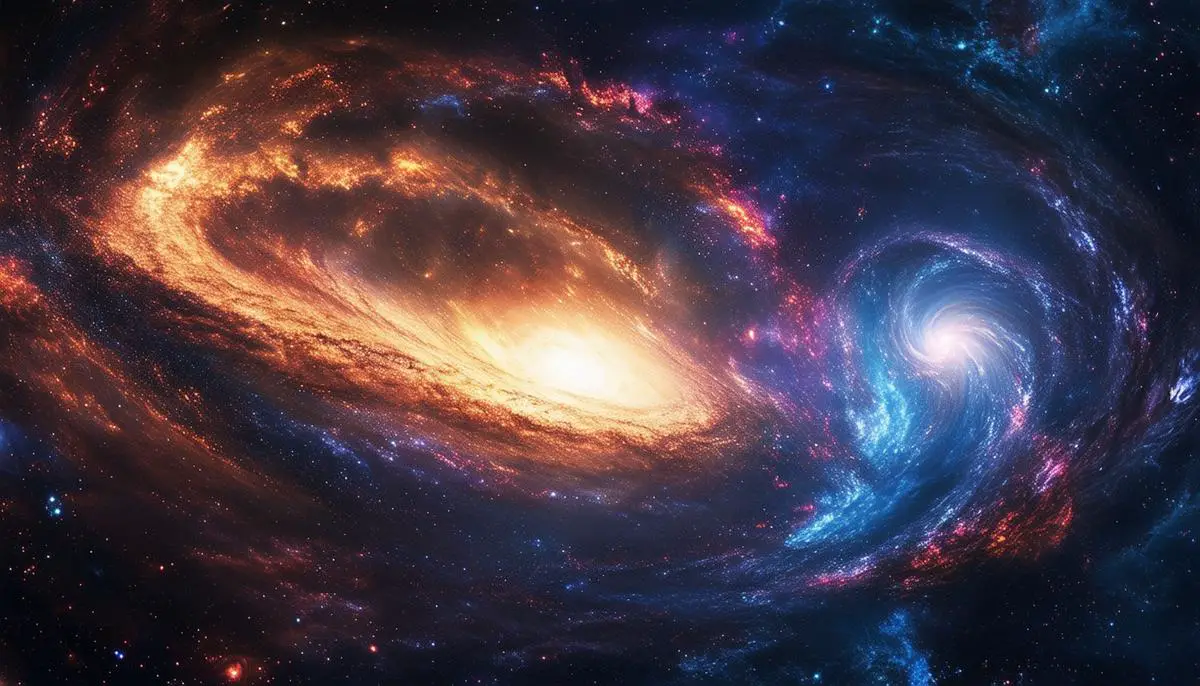The Expanding Universe and Dark Energy
In a mere second after the Big Bang, the universe transformed from a seething ocean of particles into a vast expanse spanning billions of lightyears. Today, 13.8 billion years later, the universe continues to expand, albeit at a slower rate. The isotropy hypothesis, a cornerstone of cosmology, suggests that this expansion occurs uniformly in all directions. However, recent observations challenge this view.
Imagine 800 galaxy clusters, observed by X-ray telescopes like XMM-Newton and NASA's Chandra. These clusters, with their hot gases, should shine with consistent brightness if isotropy held true. Yet, they don't. They shine brighter in one direction and dimmer in another, suggesting the universe is anisotropic—different measurements in different directions.
This anisotropy could be caused by the uneven distribution of dark energy, the mysterious force comprising over 60% of the universe and accelerating cosmic expansion. These findings might force a major reassessment of astronomical observations, as researchers would need to account for directional variations in cosmological parameters, distances, and other properties of celestial bodies.
Some studies have hinted at cosmic anisotropy using methods like Supernovae Ia observations, confirming the findings at about a 4-sigma confidence level toward specific coordinates. Factors like X-ray absorption, galaxy groups, and core metallicities failed to explain the detected anisotropy. A more detailed joint analysis involving 842 galaxy clusters even intensified the anisotropy signal.
If confirmed, these observations could challenge the traditional understanding of dark energy as a force uniformly pervading the universe. Instead, theories propose that black holes might be sources of dark energy, growing as the universe expands—a concept that could significantly alter our comprehension of cosmic expansion.
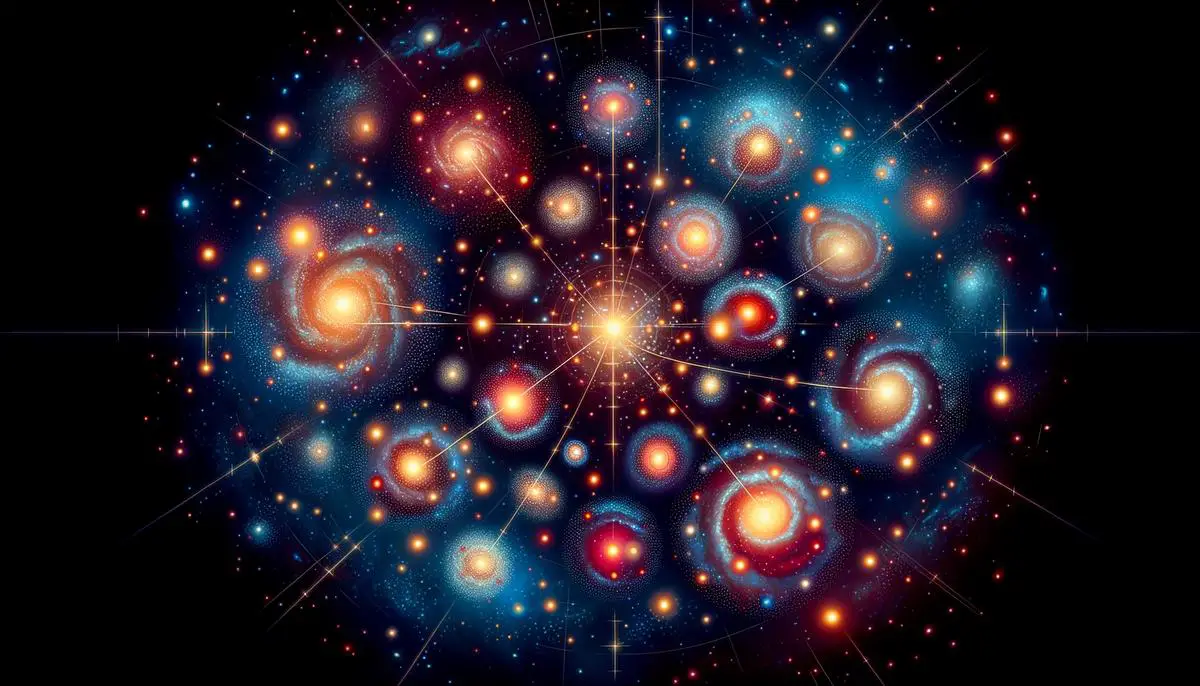
Black Holes and Dark Energy
Imagine the audacity of black holes being the true bearers of dark energy! Recent theories suggest that these monstrous gravity wells might host this enigmatic force at their very cores. What if black holes themselves, those celestial bodies from which not even light can escape, harbor the very force accelerating the universe's expansion?
Traditional understanding posits dark energy as a diffuse force, evenly spread throughout the cosmos, responsible for the universe's relentless expansion. Yet, a group of astronomers now suggests black holes might act as reservoirs for dark energy. This hypothesis arises from intriguing observations linking the mass of black holes with the expansion of the universe itself.
The researchers posit that black holes could concentrate dark energy produced during the death and collapse of massive stars, driving cosmic expansion. This theory also proposes that black holes expand in tandem with the universe, adding a new dimension to our understanding of their role.
If black holes are indeed growing by accumulating dark energy, our models of the universe, including how we perceive cosmic evolution, might need substantial revision. This paradigm shift isn't just about black holes; it's about how we fundamentally understand universal expansion.
While intriguing, the hypothesis needs rigorous investigation and peer scrutiny. Critics caution that simpler explanations might suffice, such as variations in black hole evolution over time. The evidence presented warrants closer, meticulous study, but doesn't yet constitute definitive proof.
Delving into the mechanics of black holes reveals the phenomenal phenomenon of "spaghettification," where the immense gravitational forces at the event horizon would elongate and stretch any matter falling into it. This extreme environment presents insurmountable challenges for direct observation, meaning much of our understanding comes from indirect evidence and theoretical models.
Thus, as astronomers utilize advanced telescopes and computational models to peer into the abyss, they may find clues that either solidify or dismantle this theory. The linkage of black holes to dark energy, if substantiated, could provide a definitive piece to the cosmological puzzle: an answer that bridges macroscopic cosmic expansion and the microcosmic origins of dark energy.
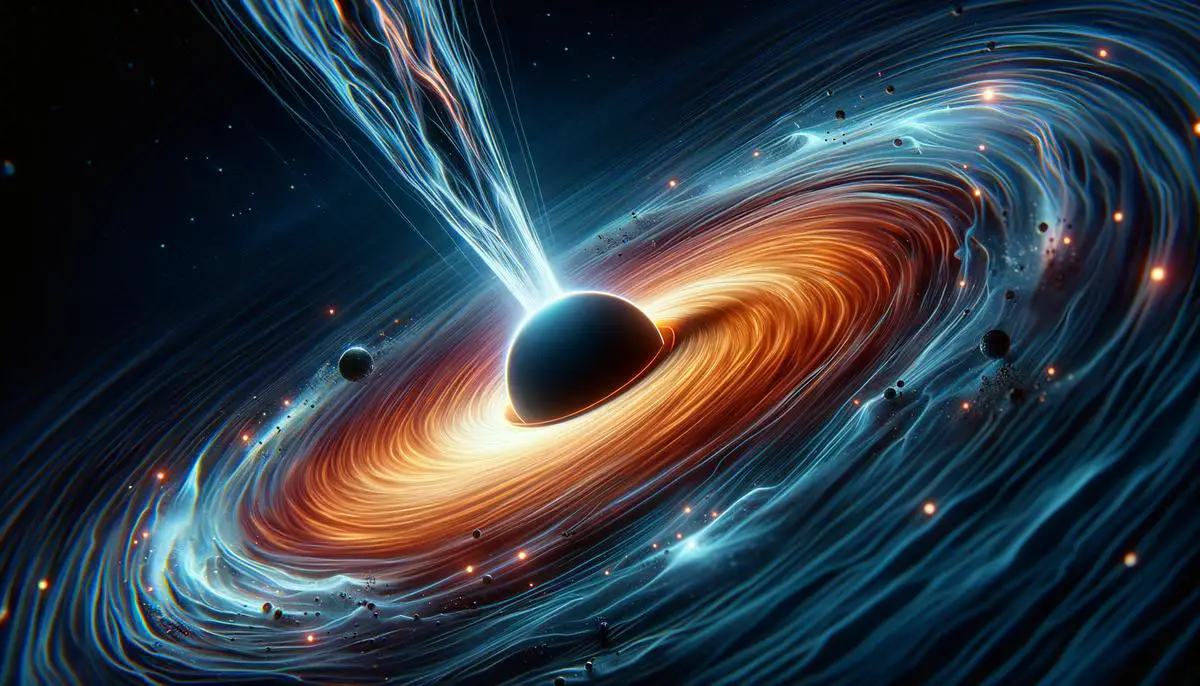
Anisotropy in Universe Expansion
Recent studies have ignited a vibrant debate about the isotropy hypothesis, which posits that the universe expands uniformly in all directions. Emerging evidence now suggests the universe might not be expanding as uniformly as once thought.
The extensive study of 800 galaxy clusters, using data from X-ray observatories like XMM-Newton, NASA's Chandra, and the German-led ROSAT, noted variances in the galaxy clusters' luminosities that challenge isotropy. Ideally, clusters with similar properties and distances would show consistent luminosity. However, the findings reveal otherwise: clusters appeared brighter in one direction and dimmer in another, indicating an anisotropic universe.
These disparities represent a pattern and cannot be easily dismissed as random or due to observational errors. The conclusions from these observations point to an uneven expansion rate, questioning a principle that has stood firm in cosmology for decades.
- One robust candidate for driving these anisotropies is dark energy, the mysterious force making up over 60% of the universe and responsible for its accelerating expansion.
- If dark energy is not uniformly distributed, it could naturally result in differing expansion rates.
- This revelation forces a reevaluation of how cosmological measures are applied across different celestial directions.
The implications of anisotropy are profound. Every observation and distance measurement in astronomy would need revision, accounting for directionality when analyzing the properties of far-flung objects using direction-dependent cosmological parameters.
The quest to reconcile these findings has inspired various new theoretical frameworks, including modifications to general relativity and proposals for new particles or fields influencing cosmic expansion non-uniformly. These efforts point the way to a broader, richer understanding of the cosmos.
In conclusion, the revelations about anisotropy are pushing the cosmic frontier ever outward. They challenge established doctrines, inviting scientists to scrutinize the vast cosmic expanse through a new, perhaps more nuanced lens. The pathway ahead, illuminated by next-generation telescopes and advanced simulations, promises to deepen our comprehension of the very universe we inhabit, continuously expanding both our knowledge and our imaginations.
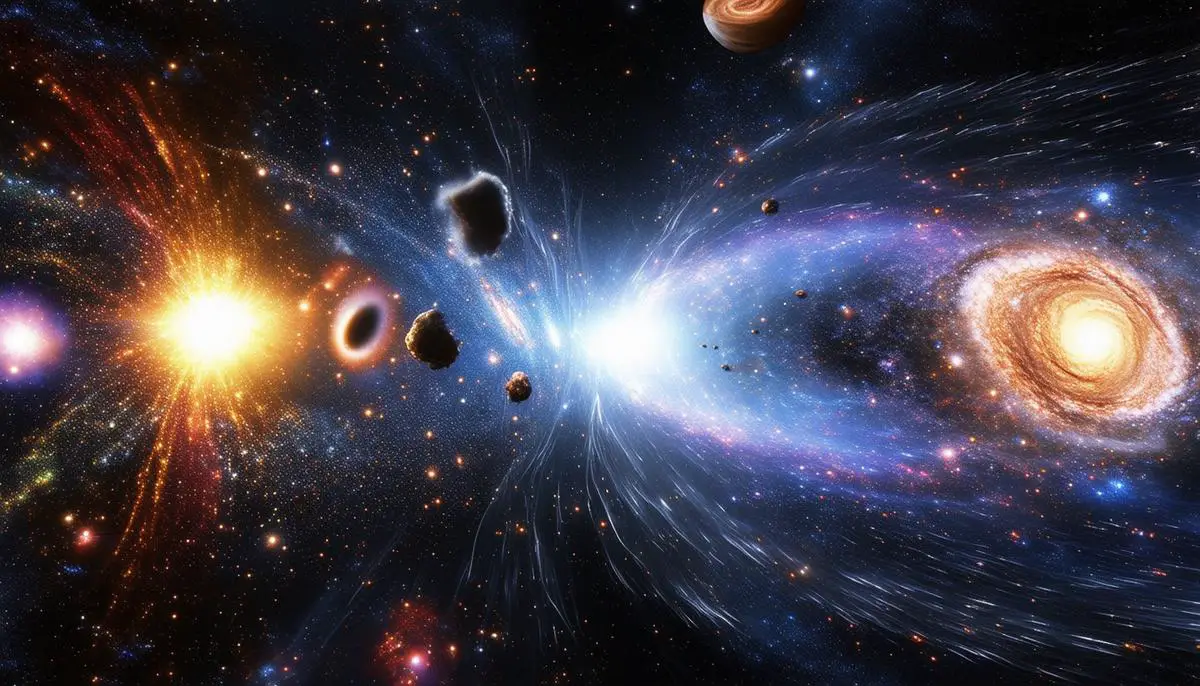
Alternative Theories: Static Universe and Tired Light
Jack Wilenchik's ideas revive interest in the tired light hypothesis and the concept of a static universe—challenging the widely accepted principles of cosmic expansion. Envision a cosmos remaining largely unchanged throughout its 13.8 billion-year history, rather than stretching out from a primordial explosion. This scenario proposes an alternative vision to the conventional Big Bang theory.
Central to this view is the tired light model, initially posited by Fritz Zwicky in the late 1920s. Zwicky suggested that as photons travel vast distances, they lose energy, causing a redshift—a shift toward the red end of the light spectrum. This redshift has traditionally been interpreted as evidence of an expanding universe. However, in the tired light model, it's framed as a gradual energy degradation; galaxies remain stationary, while light from these celestial bodies wears out over time.
Wilenchik's arguments question the Doppler effect's role in interpreting cosmic redshift. He leverages techniques like spectroscopy—a method used to analyze light spectra from astronomical objects—which once helped confirm the expanding universe through the Doppler shift. By re-evaluating this evidence, Wilenchik contends that what we've attributed to cosmic expansion might just be the fatigue of traveling photons.
Critics argue that the tired light model fails to adequately explain several critical observations:
- The universe's large-scale structure, from galaxies to clusters and superclusters, forms patterns shaped by gravitational forces over eons—phenomena better explained by an expanding universe.
- Observations of the cosmic microwave background (CMB) support the Big Bang model, showing a uniform, faint glow permeating all directions.
The static universe theory echoes the earlier "steady state" model. Proponents proposed that new matter is continuously created to maintain a constant density as the universe expands, avoiding the need for a singular beginning. However, the discovery of the CMB in 1964 provided evidence that pointed strongly to a hot, dense early universe, contradicting a static universe devoid of a dramatic origin event.
Wilenchik suggests that the light's redshift within a static universe could still allow for a background radiation consistent with observations if energy degradation occurs uniformly.
Proponents of the Big Bang theory refer to compelling observational pillars, such as the redshift-distance relationship, the abundance of light elements formed in the first few minutes, and detailed measurements of the CMB.
Despite this, alternative theories provide valuable intellectual challenges, forcing researchers to refine their methods and evidence. They highlight the necessity for rigorous testing and validation as new data, technologies, and methodologies emerge. Exploring these theories confronts us with exhilarating possibilities, redefining our grasp of cosmic evolution and structure formation, and compelling us to rethink dark energy.
The exploration of these theories underscores cosmology's dynamic nature, constantly evolving with every observational milestone and theoretical innovation. Whether through the lens of tired light, static universes, or advancing Big Bang models, our pursuit of cosmic truths remains relentless, driven by curiosity and the human spirit to uncover the universe's secrets.
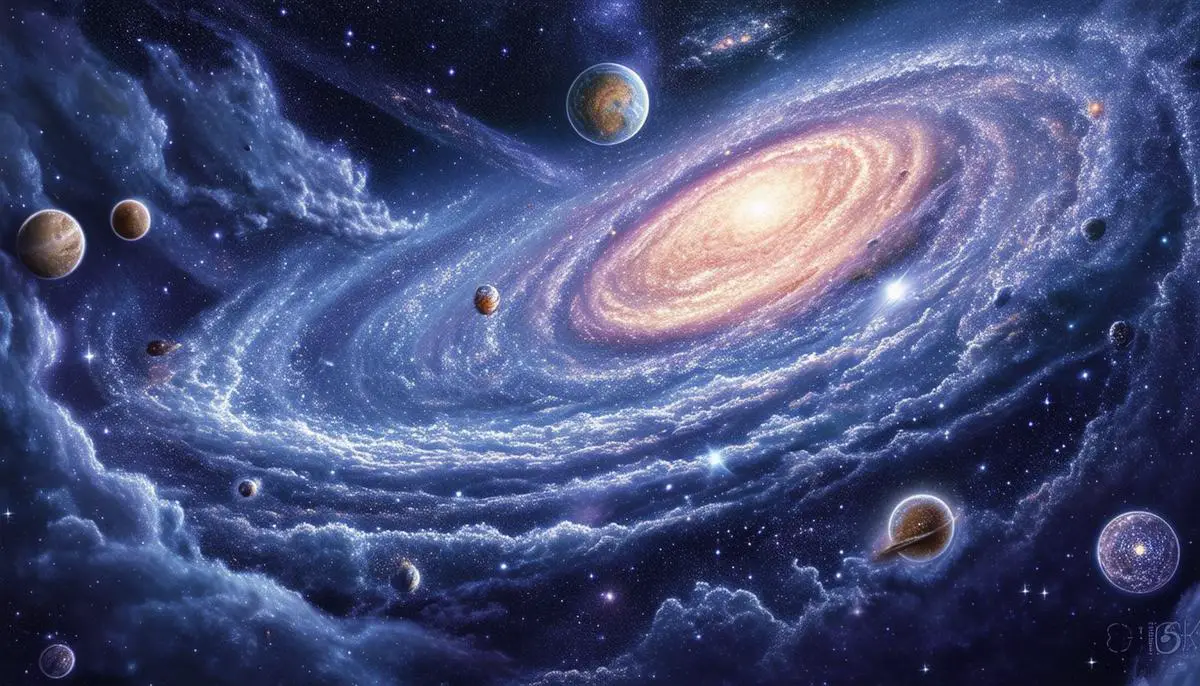
Hubble Tension and New Models
At the heart of an ongoing scientific debate lies the Hubble tension, a discrepancy between the observed and predicted expansion rates of the universe. This enigma exposes a conflict between the rate derived from observing the cosmic microwave background (CMB) and the rate derived from observing supernovae in the present universe. This discordance suggests that our current cosmological models may be incomplete, igniting a search for new ideas to more accurately describe the universe's expansion.
One prominent model under scrutiny is the Lambda Cold Dark Matter model (Lambda CDM), which includes the cosmological constant to describe dark energy and cold dark matter to account for unseen mass. While Lambda CDM has broadly succeeded in explaining many observations, it doesn't fully resolve the Hubble tension.
This has led to proposals for evolving dark energy models, where dark energy's influence varies over time, and modified gravity models, which suggest potential deviations from general relativity on cosmic scales. Testing these modifications requires examining large-scale cosmic structures and observing phenomena like gravitational lensing and galaxy cluster distributions.
As exciting as these innovations are, they highlight the complexity of unraveling the cosmic tapestry. Statistical tools and new observational data have become vital in testing the viability of these models. Advances in observational technology, like next-generation space telescopes, promise to provide more detailed datasets, potentially offering new insights or conclusive evidence towards resolving the Hubble tension.
Some propose that early universe phenomena, such as scalar fields that existed briefly after the Big Bang, may leave imprints affecting expansion measurements. These speculative yet fascinating ideas further broaden our perspective on potential resolutions, inviting us to look backwards in time for clues.
The quest to resolve the Hubble tension reflects the spirit of scientific inquiry—ceaseless, dynamic, and profoundly collaborative. As we refine existing models and explore provocative new theories, we edge closer to understanding the universe's full narrative. Whether through evolving dark energy, modified gravity, or yet-undiscovered principles, the journey continues, embodying our relentless pursuit of cosmic truth.
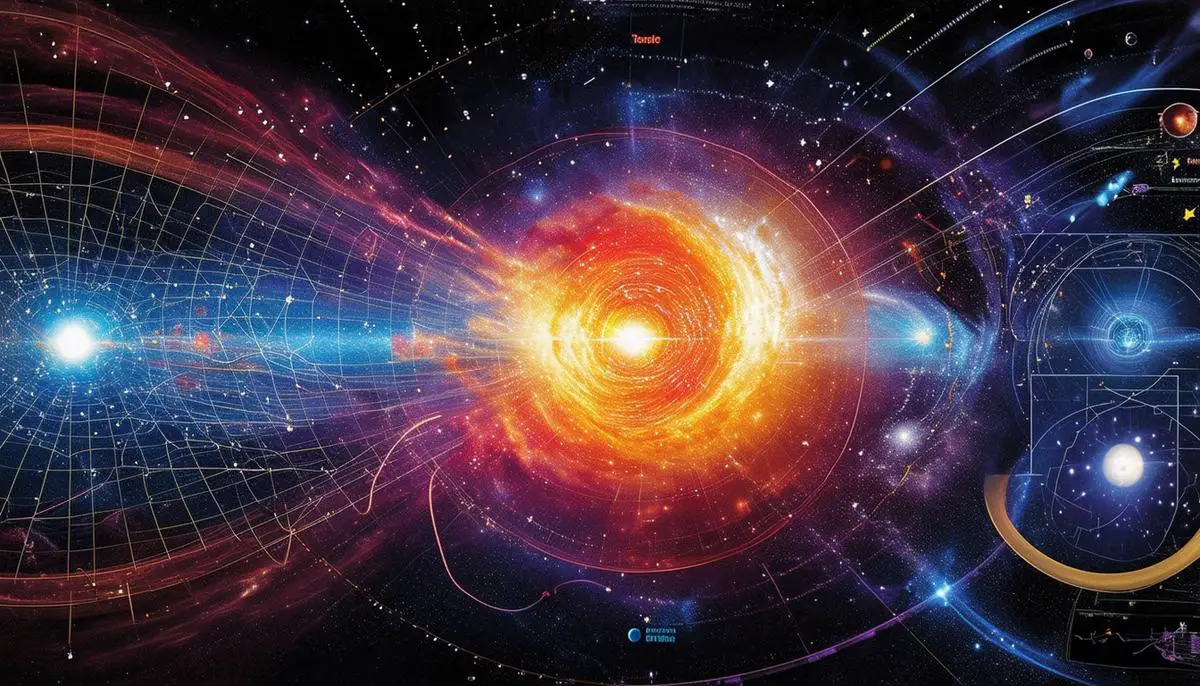
The pursuit of understanding the universe's expansion continues to push the boundaries of cosmology. Whether through evolving dark energy models, modified gravity theories, or new observational data, each step brings us closer to unraveling the mysteries of cosmic expansion. The journey is ongoing, fueled by curiosity and the relentless drive to comprehend the vast cosmos we inhabit.
![]()
